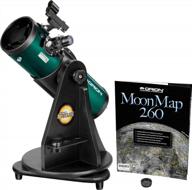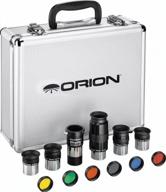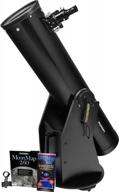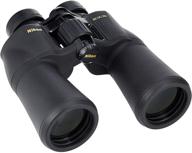
Review on 🔬 White STPCTOU Wireless Digital Microscope 50X-1000X for iPhone/iPad/Smartphone/Tablet/PC - Handheld Portable Mini WiFi USB Microscope Camera with 8 LED Lights by Brandon Show

Well that thing is awesome
I recommend these USB digital microscopes to everyone. They're ridiculously cheap and very useful. I really like this particular variant better than the more popular standard variant, it seems everyone has come up with a trademark and calls it their own. Firstly, 1000x magnification is a silly claim for all of this. When they first appeared everyone bet 40x-250x. It's pretty realistic. With my tripod I get the best at 300x-340x. The magnification measurement of a digital scope is a bit odd compared to regular scopes. This is largely measured by how much larger the image is when viewed on a 15-inch monitor. You cannot see unicellular/biological objects outside of giant amoebas. You will see tardigrades, nematodes and other 1mm things perfectly. At less than 1mm everything becomes very transparent. To get 400x magnification you pretty much need a standard transmitted light biological microscope (from below) with a 10x eyepiece and a 40x objective. You also need to prepare slides and Use dyes to make transparent what you want to see. This scope is not designed for effective biological surveillance. But it's a great scope and a lot of fun to use. This dedicated area is Wi-Fi enabled and can therefore work with iOS (iPad/iPhone) and Android over Wi-Fi. With one cable, works with everything except iOS. Wi-Fi works quite simply. The microscope is a wireless hotspot when plugged in and unplugged from USB. It does NOT offer internet, so your tablet or phone will not have wireless internet connectivity when using the oscilloscope wirelessly - unless of course you also have an EVDO/cellular data connection. The device is connected to the visor and now the two devices can communicate with each other. You can then launch the Max See app and the video will be displayed without any issues. I'm a bit of a nerd so I decided to test it out a bit on the technical side. When connected to the oscilloscope, you can use the IP address to browse the oscilloscope in a web browser. There are several ways to set up a wireless network. I don't think you can really customize much. And I can't get it to connect to the wireless network. It occurred to me to try and see if I can use it wirelessly through a computer. Maybe figure out how I can get the oscilloscope on my wireless network even if I have to use NAT behind a Linux box. I wanted to get a package to find out. But I found code on Github where some people have already gone this route. You have working code for capturing images. It turns out that this is a proprietary protocol for transferring images. Unnecessary bits/headers must be removed and then normal JPEG follows. The guys who played with him were able to write the code to get the pics and one even started a live stream. However, the code depended on Microsoft libraries and they complained about lags. I'm still confident that I can hide it behind a Linux box. IP addressing can be confusing, however, as the max-see software uses hard-coded IP address ranges to determine what type of range it connects to. At least more effort than I would like to make. Scope works great the way it is. In a nutshell. This thing works perfectly wirelessly with iPad/iOS and Android as well as the Max See app. It works with Mac/Windows/Linux/Android via USB cable. I personally use "Webcamoid" on my Linux box for this area as my camera software. Adding this (below) to webcamoid.sh before calling the executable will give you the video flip options. VERY handy for this particular scope as the image is upside down - compared to another USB digital scope I first bought which was wired only. (webcamoid.sh - just before the last line of the script that calls: webcamoid "$@" - your path to v4l1compat.so may vary on different Linux distributions) export LIBV4LCONTROL_FLAGS=3export LD_PRELOAD=/usr/lib64 /libv4l/ v4l1compat.also The image quality is of course not that great, images/videos have very low resolution. It's inexpensive and fun. And damn useful. Just don't expect this thing to be a real microscope and have a magnification, say 340x. Buying a decent tripod and mechanical stage is highly recommended. The toy stand that these things come with is fine, but a bigger one with a focus wheel to change the distance makes a world of difference. The mechanical stage makes it much easier to move objects at higher magnifications. If you don't use a stand at all and just place your scope on the surface, you get two usable magnification levels of around 100x and 250x or so. Given the price of these things, it's almost foolish not to have one. I use mine the heck and leave it on my computer desk all the time, ready to use. The photo on the right is of my stand with the stage below. It's next to my new biological microscope that just arrived today. I had to use an old pill bottle and tape to make a spacer/washer to better hold this particular scope on the stand where I wanted it to be up high and focused. Works perfectly. It is highly recommended to buy a digital USB microscope. It's sort of a toy, but a damn useful one, and while it doesn't produce the amazing quality or stereoscopic 3D image of a decent stereo microscope, it's just a lot more flexible and convenient to use at higher magnifications.
- 🔍WHAT YOU GET - 1x Wireless Digital Microscope, 1x USB Cable, 1x Metal Stand, 1x Plastic Stand, 1x User Manual, our 24/7 professional after-sales service.
- boring packaging
New products
Comments (0)
Top products in 🔭 Binoculars & Scopes

Discover The Wonders Of The Universe With Orion StarBlast 4.5 Telescope In Teal Color

14 Review

Enhance Your Stargazing Experience With Orion'S Premium Telescope Accessory Kit (1.25-Inch, Silver)

21 Review

Explore The Night Skies With The Orion SkyQuest XT8 Classic Dobsonian Telescope

12 Review

Nikon ACULON A211 8248 10x50 Binoculars (Black)

20 Review







